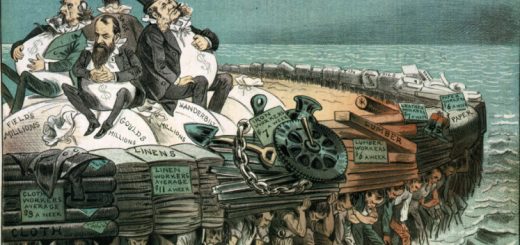Vaccinating the Nation: the First Consul, Dr Guillotin and the No-Vax
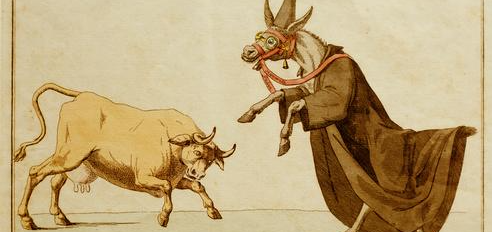
In the light of present disputes over the anti-covid-19 vaccination, this remote historical episode, with its trail of propaganda, political opportunism, and ideological controversies, shows an oddly familiar landscape. But was vaccinating a whole nation any easier then, than it had proved to be now?
In the early years of the 19th century, the newly established government of the Consulate undertook the task of vaccinating France’s population against the smallpox. At the time smallpox was an endemic infectious disease that flared up in periodical bouts of epidemic. It accounted for about 10% of deaths in Europe. The mortality rate for those infected was high: from 20% to 40% for adults and up to 90% in the case of children. Survivors were at best disfigured, at worst crippled or blinded. Vaccination – a significant improvement on the older practice of inoculation – was a pioneering procedure developed in England by Edward Jenner in the 1770s, but never applied before on such large scale.[1] Considering the sanitary context of the 1800s, the French pro-vax crusade was an unquestionable success. Within ten years, about half of French children – the main target of the initiative – had been vaccinated, while the practice had spread to other European countries, especially (but not only) those under French rule. Life expectancy in France jumped from 30 years in 1800, to 37 in 1810.[2]
In the light of present disputes over the anti-covid-19 vaccination, this remote historical episode, with its trail of propaganda, political opportunism, and ideological controversies, shows an oddly familiar landscape. But was vaccinating a whole nation any easier then, than it had proved to be now?
Immunity by Central Committees
The project of introducing in France the anti-smallpox vaccination begun in May 1800 –six months after the establishment of the Consulate – as a philanthropic initiative. A group of medics, scientists and enlightened notables founded the Central Committee for Vaccination (Comité central du Vaccin), relying on the financial support of private subscribers. They had been inspired by the publication by Jenner of the results of his experiences, made known to the French public mainly through the Genevan press: the journal Bibliothèque britannique, edited in Geneva by Louis Odier, became a major voice in the pro-vaccination propaganda.[3] While the words inoculation and vaccination were often used as synonyms, they indicated two quite different procedures: roughly, the traditional inoculation (or variolisation) consisted in introducing directly in the organism some pathogenic germs taken from humans; vaccination used the medium of an antigenic preparation taken from cows suffering from a bovine version of smallpox, the cowpox, which had a lower degree of toxicity for humans.
The Committee established in Paris, near the Hôtel de Ville, a Hospice for Inoculation, while deposits for storing the vaccine were created in several towns across the country on the initiative of local associations. The main initial concern, however, was to test the risks of the new procedure, given that inoculation, though adopted by some families of the aristocracy, had been regarded as hazardous, and even forbidden by the authorities both in England and France. There were exchanges amongst practitioners in both countries, made easier after 1802 by the peace of Amiens; in 1803 Jenner himself was associated to the Academy of Medicine in Paris. Following a then current practice (which seems horrifying to us), the vaccine was tested on children from foundlings’ hospices and orphanages. The results were satisfactory: inoculation had caused the occasional casualty, vaccination did not seem to; the efficacy of immunisation was confirmed in 1802 during a wave of smallpox epidemic in Paris, when mortality was considerably lower in the district where vaccination had been introduced.
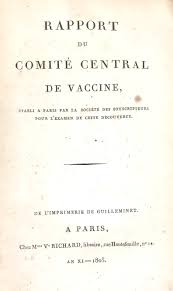 In March 1803 the Central Committee and the Institut presented to the First Consul a detailed report on the progress of vaccination. Bonaparte then instructed the Minister of the Interior Jean-Antoine Chaptal – himself a physician and chemist – to carry out an extensive inquiry on the impact of smallpox on the sanitary conditions of the departments. The following year, on the 4th April 1804, the original Committee was taken over by the government and transformed into the more aggressively named Central Society for the Extinction of Smallpox (Société centrale pour l’extinction de la vérole).[4] Prefects were now responsible for organising vaccination throughout the territory and coordinating a network of local commissions, as well as ensuring supplies and the training of medical personnel; they were also expected to produce regular reports on their activities, to be publicised in a Bulletin de la vaccine.
In March 1803 the Central Committee and the Institut presented to the First Consul a detailed report on the progress of vaccination. Bonaparte then instructed the Minister of the Interior Jean-Antoine Chaptal – himself a physician and chemist – to carry out an extensive inquiry on the impact of smallpox on the sanitary conditions of the departments. The following year, on the 4th April 1804, the original Committee was taken over by the government and transformed into the more aggressively named Central Society for the Extinction of Smallpox (Société centrale pour l’extinction de la vérole).[4] Prefects were now responsible for organising vaccination throughout the territory and coordinating a network of local commissions, as well as ensuring supplies and the training of medical personnel; they were also expected to produce regular reports on their activities, to be publicised in a Bulletin de la vaccine.
The Central Society, run by a scientific council, had the task of supervising the overall campaign of vaccination, issuing the appropriate certificates (certificats de vaccination); it pursued research into new medical techniques, carried out experiments, and elaborated statistics. This rapid transition from private initiative to public institution is unsurprising, if one considers the list of the original subscribers, which included from the start the most influential political figures of the Consulate: besides the consuls Bonaparte and Lebrun, an assortment of ministers and senators: Lucien Bonaparte, Talleyrand, Fouché, Carnot, Roederer, Thouret, and the prefect of the Seine Frochot (who had made possible the experiments in the hospices). Before the Revolution smallpox had managed to kill one king of France – Louis XV – and several dauphins;[5] but now the dignitaries of the republic were ready to march in battle order against it.
One major actor in the vaccination campaign was the Chairman of the Committee, the physician Joseph-Ignace Guillotin. In 1789, as a member of the Constituent Assembly, Guillotin had pleaded for a reform of capital punishment: citizens were to become equal also in the manner of their execution (beheading was until then a “privilege” of the aristocracy), while all cruel forms of death – such as the wheel or the stake – must be abandoned. An abolitionist, who hoped that the suppression of such ferocious practices would eventually lead to 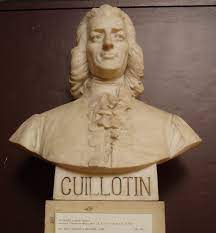 the end of the death penalty (an option the Constituent rejected in 1791), he was not the inventor or the promoter of the machine that took is name only because of his interventions at the Assembly.[6] Indeed, deeply affected by finding himself associated with an instrument of death, he retired from politics. Briefly arrested during Terror for refusing to reveal the whereabouts of some ‘suspect’ patients, he was liberated at Thermidor and returned to practicing medicine. Now he had finally the opportunity to engage in a truly humanitarian mission: on behalf of the Committee, he went to present to the First Consul the beneficial effects of the vaccine: an easy task, since Bonaparte’s passionate interest in scientific inventions was well-known.[7]
the end of the death penalty (an option the Constituent rejected in 1791), he was not the inventor or the promoter of the machine that took is name only because of his interventions at the Assembly.[6] Indeed, deeply affected by finding himself associated with an instrument of death, he retired from politics. Briefly arrested during Terror for refusing to reveal the whereabouts of some ‘suspect’ patients, he was liberated at Thermidor and returned to practicing medicine. Now he had finally the opportunity to engage in a truly humanitarian mission: on behalf of the Committee, he went to present to the First Consul the beneficial effects of the vaccine: an easy task, since Bonaparte’s passionate interest in scientific inventions was well-known.[7]
Generals without Green Pass
The First Consul’s personal engagement was crucial for the escalation of the anti-smallpox campaign. As it happens Bonaparte had a score to settle with the invisible enemies responsible for epidemics. During his military expedition in Egypt in 1798-1799, he had been confronted with the dramatic consequences of a plague epidemic on the civil population and on his army.[8] Nothing much could be done against the plague as its causes and means of transmission were unknown (the bacteria responsible for it was discovered only in 1894 by Alexandre Yersin). In the absence of any effective treatment, the only possible measures were prophylactic: cleaning, spreading disinfectants, burning refuse and anything that had come in contact with the disease, confining the sick. In any case preventing contagion in densely populated towns such as Cairo and Alexandria proved impossible, and the Egyptian authorities were understandably unwilling to cooperate with the occupant.[9]
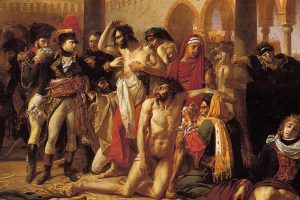 On the 11 March 1799 Bonaparte went to visit the monastery in Jaffa where the French plague victims were confined. To the alarm of his staff, he spent some hours there, occasionally helping to shift the patients, without refraining from physical contact. The episode is famously immortalised in a painting by Antoine-Jean Gros, which shows the general, in feathered hat and full military uniform, as a thaumaturgic figure, stretching his hand to touch the bubo under the arm of a half-naked plague sufferer. Bonaparte’s gesture aimed at reassuring his troops, since soldiers, terrified of contagion, often refused to assist their sick comrades. He was probably familiar with the view, presented as a scientific truth in the Encyclopaedie, that in epidemics contagion was greatly facilitated if the subject experienced a state of acute fear and moral discouragement: in other words, courage was an effective prophylactic against the risk of getting infected.[10]
On the 11 March 1799 Bonaparte went to visit the monastery in Jaffa where the French plague victims were confined. To the alarm of his staff, he spent some hours there, occasionally helping to shift the patients, without refraining from physical contact. The episode is famously immortalised in a painting by Antoine-Jean Gros, which shows the general, in feathered hat and full military uniform, as a thaumaturgic figure, stretching his hand to touch the bubo under the arm of a half-naked plague sufferer. Bonaparte’s gesture aimed at reassuring his troops, since soldiers, terrified of contagion, often refused to assist their sick comrades. He was probably familiar with the view, presented as a scientific truth in the Encyclopaedie, that in epidemics contagion was greatly facilitated if the subject experienced a state of acute fear and moral discouragement: in other words, courage was an effective prophylactic against the risk of getting infected.[10]
Later the general addressed a letter to the officer responsible for supplies, Jean-Pierre d’Aure, listing meticulously the items, necessary to assist the patients, that were lacking in the hospital, ordering that they should be procured as fast as possible: from honey and barley (used to produce some soothing beverage) to basins for washing, linen and the stuff to make bandages. Behind the flat enumeration of necessities one can sense the writer’s shock and impotent rage at being unable to do anything more for those unfortunates “who have such strong claims to our interest”.[11] According to the doctor in charge, René-Nicolas Desgenettes, Bonaparte confessed that, in his place, he would give opium to the dying, shortening their agony and preventing them from falling in the hands of the Turks. The physician claimed to have turned down the suggestion: in any case when the English army (rather than the Turkish one) occupied Jaffa, some of the patients were still alive.[12]
A few months later Bonaparte left the commandment of the army to general Kléber and returned to France. After calling at Ajaccio, the general and his companions – including a few future marshals of France and two of the country’s most prominent scientists, Gaspard Monge and Claude-Louis Berthollet – disembarked at the small harbour of Saint Raphaël. From there they continued their journey to Paris, ignoring the strict regulations that imposed quarantines on all ships coming from the ‘orient’ (three types of sanitary passport were issued according to the place of provenance, each imposing a different length of confinement). Their passage left a trail of angry recriminations between the health authorities of Toulon and Marseille, who accused one another of failing to pass on the information about the arrival of the frigate from Egypt, and to stop the travellers.[13]
Besides having a coup d’état to organise,[14] Bonaparte did not think much of quarantines. In a speech at the opening of the legislative session on the 27th December 1804, he referred to some unspecified epidemic in the Rhine and Moselle region, assuring that “measures dictated by prudence and interest in public health” had been adopted, however “without interrupting the communications necessary to feed our commerce and manufactures”.[15] To defensive, prudential measures, he clearly preferred a direct attack. The plague had defeated him, but now, thanks to Jenner, he had the means to take at least his revenge on smallpox.
Vaccination: a Bovine Matter
How difficult was it for the Central Committees and their derivations to induce the French people to vaccinate their children? Looking back, we are inclined to imagine an authoritarian regime (just about to turn itself into the empire) forcing its will upon a recalcitrant, but essentially passive populace. Yet the evidence suggests quite another picture.
The main difference between the attitude of the authorities of 1800 and those of today, is that they anticipated a vigorous resistance to their plans. Discovering that, in societies shaped by scientific progress and technology, large numbers of people would reject a proven medical device with superstitious or pseudo-scientific motivations has come as a surprise to most 21st century observers. The campaigners of the 1800s, on the other hand, had good reasons to expect opposition, both from the public at large and from the medical profession. In the previous decades inoculation had met with mistrust, scepticism, and even open hostility, while its introduction was occasionally accompanied by violent attacks against those who practiced it. The very notion of contaminating patients to protect them from disease was counterintuitive. Unlike inoculation vaccination was a recent discovery; it came from England, France’s traditional enemy (similarly, in England, the fact that inoculation was ’imported’ from the Ottoman Empire looked suspicious); it had been tested on a very limited 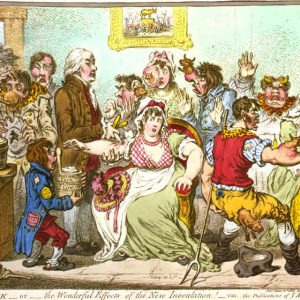 scale by any standard. To make things worse, vaccination used an animal medium. In England Jenner’s invention had been the target of satirical illustrations that showed vaccinated crowds growing bovine traits such as horns and tails; in France too, the idea of a biological communion with cows – possibly even English cows – did not go down well. While Big Pharma was not yet in the picture, inoculation, performed on selected patients from the upper classes, had proved a lucrative business. By contrast vaccination was dispensed by the state for free to the poor, and for a modest fee to those who could afford to pay. Predictably some physicians were not happy with the innovation and denounced the new procedure as useless and unsafe.
scale by any standard. To make things worse, vaccination used an animal medium. In England Jenner’s invention had been the target of satirical illustrations that showed vaccinated crowds growing bovine traits such as horns and tails; in France too, the idea of a biological communion with cows – possibly even English cows – did not go down well. While Big Pharma was not yet in the picture, inoculation, performed on selected patients from the upper classes, had proved a lucrative business. By contrast vaccination was dispensed by the state for free to the poor, and for a modest fee to those who could afford to pay. Predictably some physicians were not happy with the innovation and denounced the new procedure as useless and unsafe.
As historians have not failed to point out, the arguments set forth against vaccination at the time of its introduction followed roughly the same patterns as those of today.[16] There were of course reasonable objections dictated by prudence, far more justified then, given the limited capacity of early 19th century medicine to control infections. Otherwise, anti-vax reactions were ideological or based on pseudo-scientific beliefs. One form of opposition was religious: vaccination was seen (like other medical discoveries) as an attempt to oppose god’s will. During the 18th century, inoculation had been denounced from pulpits in England and in the American colonies as a diabolical practice or a form of witchcraft. In France this traditional religious perspective took on a strong political connotation, since the Revolution had created a profound rift between that part of the population who were still attached to the old beliefs, and the new ‘de-Christianised’ regime. The promoters of the vaccine were seen by many as the murderous agents of a vast anti-Christian conspiracy.[17]
Then there were the advocates of the preservation of natural order, sometimes inspired by Rousseau, who favoured the practice of traditional medicine: smallpox was treated with extracts of plants, but also occasionally with more appealing products such as red wine and chocolate. Some practitioners of natural medicine had a large (and lucrative) clientele. However, the strongest and more vocal objections to vaccination came from the proponents of extravagant pseudo-scientific theories. The most common one claimed that people who had been vaccinated became necessarily a major source of transmission of the disease. It was also asserted that smallpox inoculation opened the way for the ‘invasion’ of the organism by all manner of other contagious illnesses, such as syphilis or hepatitis. Just like today, it was also believed that vaccination affected fertility: indeed, some doctors denounced it as a means to procure abortions.[18]
The Propaganda War
The issue of the freedom of individuals to choose whether to subject their bodies to inoculation had been extensively debated during the 18th century: thus, the term ‘conscientious objectors’ originally referred not to the opponents of militarism, but to those who were against immunisation. Public officials and philosophically minded individuals made the pilgrimage to Konigsberg to consult Immanuel Kant on the matter (he was against inoculation on moral grounds).[19] However, the question – so prominent in today’s controversies – had no place in the experience of the Consulate, as vaccination was never made compulsory. There is no evidence that this choice on the part of the French government was dictated by any moral concern with individual liberties: general obligation just seemed impracticable and impossible to enforce in a context where public control over the population was very limited.
It is important to stress that French vaccine promoters were not acting during a major epidemic and under a state of emergency: on the contrary, since 1795 the Republic had struggled to restore ‘normal’ constitutional rule.[20] Rather than imposing sanctions, they chose to rely on a mix of incentives and propaganda. There were ‘open days’ for vaccination with distributions of food, and prices were given to those who performed the largest number of inoculations. Economic sanctions – such as a tax imposed on parents who refused to vaccinate their children – were discussed but rejected, though some departments did suspend the payment of public aids to the renitent families.
Despite its centralised organisation, the campaign relied on a network of local agents – mayors, surgeons, pharmacists, and such – anyone who could exercise some influence upon their community. In the 1801 the Consulate had signed a Concordat with the Catholic Church, allowing those priests who had fled the country during the Revolution to return. The government now exploited this circumstance, putting pressure on priests to persuade their parishioners of the beneficial effects of the vaccine: many complied, and babies taken to be baptised were also inoculated. In later years, when Napoleon’s son was born in March 1811, he was first vaccinated (11 May), then baptised (9th June): the sequence may have been dictated by practical reasons, but it did show his father’s priorities. Both events were widely publicised.
But the main tool of the campaign was a massive effort of propaganda, a type of war of which the First Consul had already proved to be master. The official line was that vaccination was perfectly safe and 100% effective. To preserve this view, the government – by now well equipped to control information – placed an embargo on any dissident theories: journals were allowed to publish on the subject only if the content of their articles was approved by the Academy of Medicine. This did not entirely silence anti-vax voices, but it did certainly help to reduce their impact.
Overall the Consulate’s attitude was openly – and unashamedly – paternalistic. France’s rulers believed they had the duty to protect the health of the people, relied on the best scientific advice available, and invested considerable means to make the new medical discovery available to all. At the same time, convinced of the rightness of their cause, they treated citizens like minors, who had to be cajoled to take their medicine, and who should be told only an edited version of the truth. It would be reassuring to think that such paternalistic approach, however effective, has no longer its place in 21st century democracies. And yet the policies adopted by democratic governments across the world to promote the anti-covid-19 vaccine – so brilliantly made available in such a short time – suggest otherwise.[21] Panicked by the emergency, in pain to be heard above the clamour of contradictory scientific opinions, democratic rulers have confusingly fluctuated between authoritarianism and indecisiveness, alternating sanctions and rewards, transparency and half-truths. The age of Central Committees is over, but we may still have something to learn from their clarity of purpose and their outdated methods.
Biancamaria Fontana is Emeritus professor of History of political thought at the University of Lausanne, and a member of the Walras Pareto Centre for the history of economic and political thought. Her last book is on La République helvétique, laboratoire de la Suisse moderne.
Footnotes
- Thierry Lentz, “Napoléon declare la guerre à la variole”, napoleon.org, Dec. 2020. ↩
- Until Louis Pasteur’s research in the 1880s, smallpox was the only transmissible disease for which a vaccine had been discovered. ↩
- Edward Jenner, An Inquiry into the Causes and Effects of the ‘variolae vaccinae’ (1798). In 1798 the Republic of Geneva had been annexed to the French department of the Leman. ↩
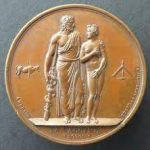 A medal issued to celebrate the event carries on the front the god of medicine Asclepius embracing protectively Venus, who wears the inoculation bandage on her left arm; the tableau is completed by a cow and some mysterious medical instrument, while the profile of the (recently promoted) emperor Napoleon features on the back. ↩
A medal issued to celebrate the event carries on the front the god of medicine Asclepius embracing protectively Venus, who wears the inoculation bandage on her left arm; the tableau is completed by a cow and some mysterious medical instrument, while the profile of the (recently promoted) emperor Napoleon features on the back. ↩- Shocked by the horrible agony of his grandfather in 1774, Louis XVI decided to be inoculated. The exact number of dauphins killed by smallpox is uncertain, as the symptoms were sometimes confused with those of other infectious diseases such as chickenpox (also occasionally lethal). ↩
- The guillotine was invented by a German harpsicord maker, Thobias Schmidt. After Guillotin’s death in 1814 his family decided to change their name. ↩
- For details on the members of the Central Committee see Hervé Bazin, « Les membres du Comité Central de Vaccine, une poignée d’hommes qui ont bien mérité de leur patrie, et même de l’humanité », Bulletin de l’Académie Nationale de Médecine, 2001, vol. 185, 4, pp. 749-765. ↩
- Michèle Battesti, « La peste et l’expédition d’Egypte », in Jean Baecheler ed., Guerre et Santé, Hermann, 2018, pp. 113-139. Robet Solé, Bonaparte à la conquête de l’Egypte, Paris, Seuil, 2006. ↩
- One of the prophylactic measures adopted by the French army consisted in slaughtering some 2.500 men from the garrison of Jaffa who had surrendered, as well as a random selection of civilians. ↩
- ‘Peste’, Encyclopaedie, vol.12; the author of the article was Jaucourt. ↩
- The letter is dated 22 March 1799; Napoléon, Correspondance, Paris, Laffont, 2020, pp. 286-287. ↩
- English propaganda magnified the incident, suggesting that the French had suppressed their own plague victims. ↩
- Daniel Panzac, « Un inquietant retour d’Egypte : Bonaparte, la peste et les quarantaines », Cahiers de la Méditerranée, 57, 1998, pp. 271-280. ↩
- It is of course questionable whether the preparation of the coup of Brumaire was a better excuse than having to watch a tennis tournament (like the former chairman of Crédit Suisse), or to play in one, like Novak Djokovic. ↩
- Correspondence, p. 456. ↩
- Françoise Salvadori et Laurent-Henri Vignaud , La résistance aux vaccins du XVIIIème siècle à nos jours, Paris, Vendémiaire, 2019. ↩
- Most members of the political class and of the medical profession in the 1800s were freemasons. ↩
- Hervé Bazin, « Histoire des refus vaccinaux », Bulletin de l’Académie Nationale de Médecine, vol. 194, 4-5, April-May 2010, pp. 705-718. ↩
- Grégoire Chamayou, « L’inoculation, expérience de masse » in Les Corps Vils, expérimenter sur les êtres humains aux XVIII et XIX siècles, Paris, La Découverte, 2014, pp. 97-138. Kant thought that acquiring voluntarily a disease was immoral, just like suicide. ↩
- In 1812 the empire introduced compulsory vaccination for specific categories that were at risk because they lived in communal environments such as soldiers, prisoners, and school boarders. The obligation proved difficult to enforce. ↩
- Alberto Mingardi, Gilberto Corbellini, La società chiusa in casa, Milano, Marsilio, 2021. ↩
To cite this blog post : Biancamaria Fontana, « Vaccinating the Nation: the First Consul, Dr Guillotin and the No-Vax », Blog of the Centre Walras Pareto, March 7, 2022, https://wp.unil.ch/cwp-blog/2022/03/vaccinating-the-nation/.


